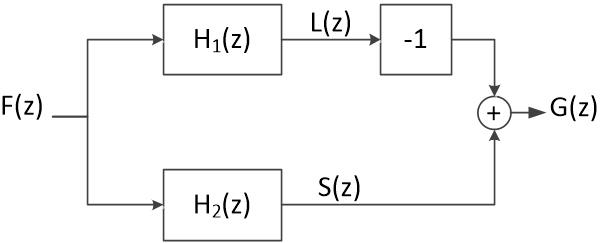I am using a filter following equations from papers. It is basically the difference between exponential moving average and simple moving average.
$$L[n]=\frac{1}{\alpha_L}f[n]+\left(1-\frac{1}{\alpha_L}\right)L[n-1]$$
$$ S[n]=\frac{1}{\alpha_S}\sum_{k=0}^{\alpha_S}f[n-k]$$
$$ g[n]=S[n]-L[n]$$
- $f[n]$ - original signal
- $g[n]$ - filtered signal
- $\alpha$ - window size
I can find their transfer function separately for $L$ and $S$, but I have no idea how to get transfer function of $g[n]$. Anyone please guide me, I would really appreciate it.

